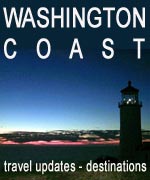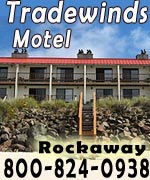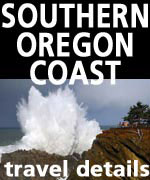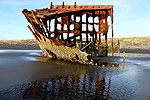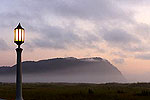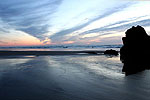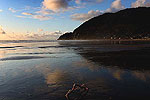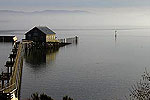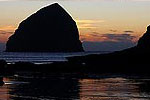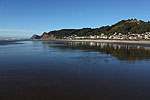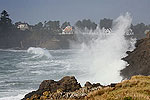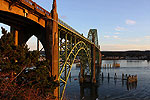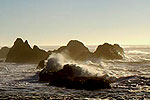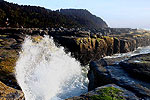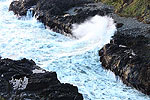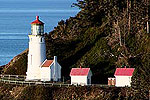Wild Tales from Oregon Coast Lighthouses: Giant Holes to Killer Storms
Published 5/17/24 at 6:15 a.m.
By Andre' Hagestedt, Oregon Coast Beach Connection
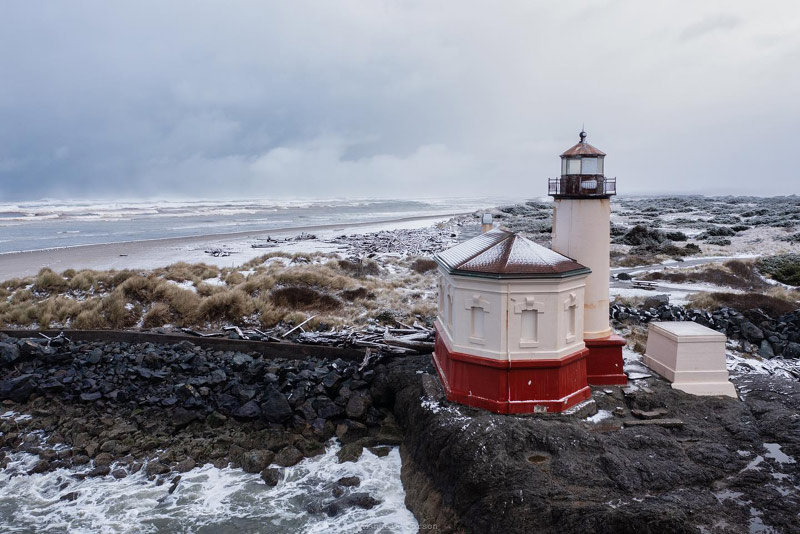
(Oregon Coast) – One thing that always captures the eye while out on this coastline is the lighthouses. Almost none are fully accessible now, and some are completely closed off forever. One may actually disappear in the coming years. They're a very welcoming, intriguing sight but they're an increasingly rarer breed of architecture. (Above: snow at the Coquille River Lighthouse, just like its second night of existence - courtesy Manuela Durson - Manuela Durson Fine Arts)
Just about all of them have quite the wild tales, too. Here are some prime historical moments from Port Orford, Coos Bay, Bandon, Florence and Seaside / Cannon Beach.
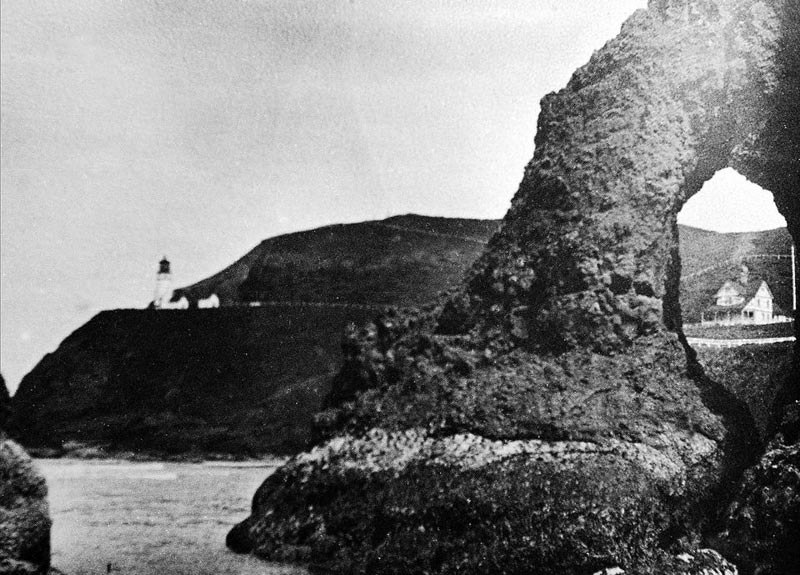
Courtesy Heceta Head Lighthouse
Includes exclusive listings; some specials in winter
In Cannon Beach:
Includes rentals not listed anywhere else
In Manzanita, Wheeler, Rockaway Beach:
Some specials for winter
In Pacific City, Oceanside:
Some specials for winter
In Lincoln City:
Some specials for winter
In Depoe Bay, Gleneden Beach:
Some specials for winter
In Newport:
Look for some specials
In Waldport
Some specials for winter
In Yachats, Florence
Some specials for winter
Southern Oregon Coast Hotels / Lodgings
Reedsport to Brookings, places to stay; winter deals
Heceta Head Lighthouse Near Florence. It is one of the most photographed lighthouses in the world, and certainly has that distinction on the Oregon coast. Heceta Head is set back a ways and on firm ground, and hasn't quite seen the same action as others. It did, however, stop working for a brief time due to a landslide.
It was February 12, 1961, and the central Oregon coast landmark was manned by Oswald Allik, among others. Allik was the last person onboard Tillamook Rock Lighthouse up north a couple of years before that. This particular night saw a massive landslide hit the area, taking out the electrical cables that powered the electric light. Allik and two others had go up in into the top of the lighthouse, insert an old school gas lamp where the electric beam was, and then each took turns cranking the apparatus around by hand. This went on for hours. [One Man Connected Tillamook Rock and Heceta Head Lighthouses]
There was an electrical backup, but that was cut out by the landslide as well.
The Heceta Head Lighthouse became obsolete within a few years, like all of them did.
Other interesting historical tidbits here include the “imploding whale” legend of Florence and how they had to blast some of the rock at Heceta Head for safety purposes.
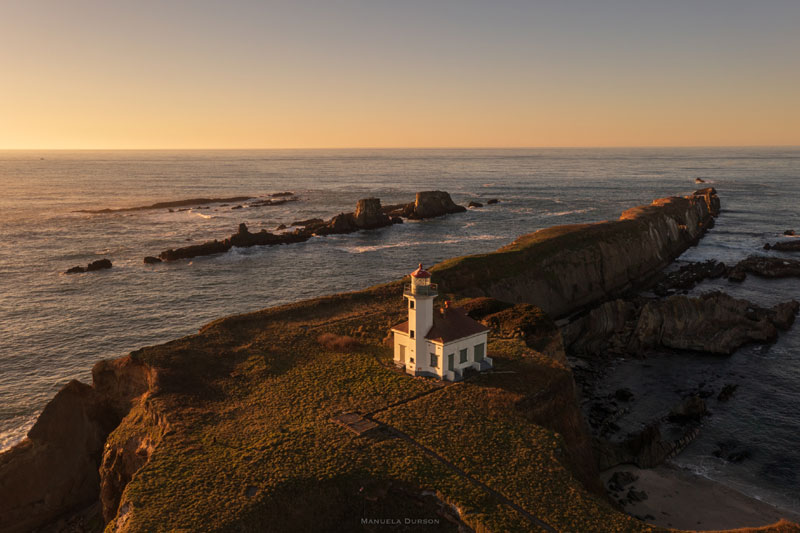
Manuela Durson - Manuela Durson Fine Arts
Cape Arago Lighthouse near Coos Bay. The little island upon which this tower sits is crumbling. Called Chief's Island, it is geologically extremely unstable, and the rickety bridge which was closed off a good decade ago has been gone for almost as long. It's made of a type of sandstone, not unlike the cliffs of the mainland, which have also been giving way for decades.
Some 35 feet of the residential cliffs disappeared from the '40s through the '70s, but that erosion rate is probably even higher at the island. Some experts believe the ground around the Cape Arago Lighthouse could swallow it in the next decade. There are certainly large holes in the area now. Tales of the End of a South Oregon Coast Lighthouse: Chief's Island and Arago Light
The island and the light were both handed back to local tribal ownership in recent years, but going there presented plenty of danger for a long time before that. Tribal tradition holds that it is a sacred place, anyway.
In 2005, one local saw more of the island disappear: a hole appeared in one spot that allowed you see all the way to the other side. Surprise History: There Were Three Cape Arago Lighthouses on S. Oregon Coast
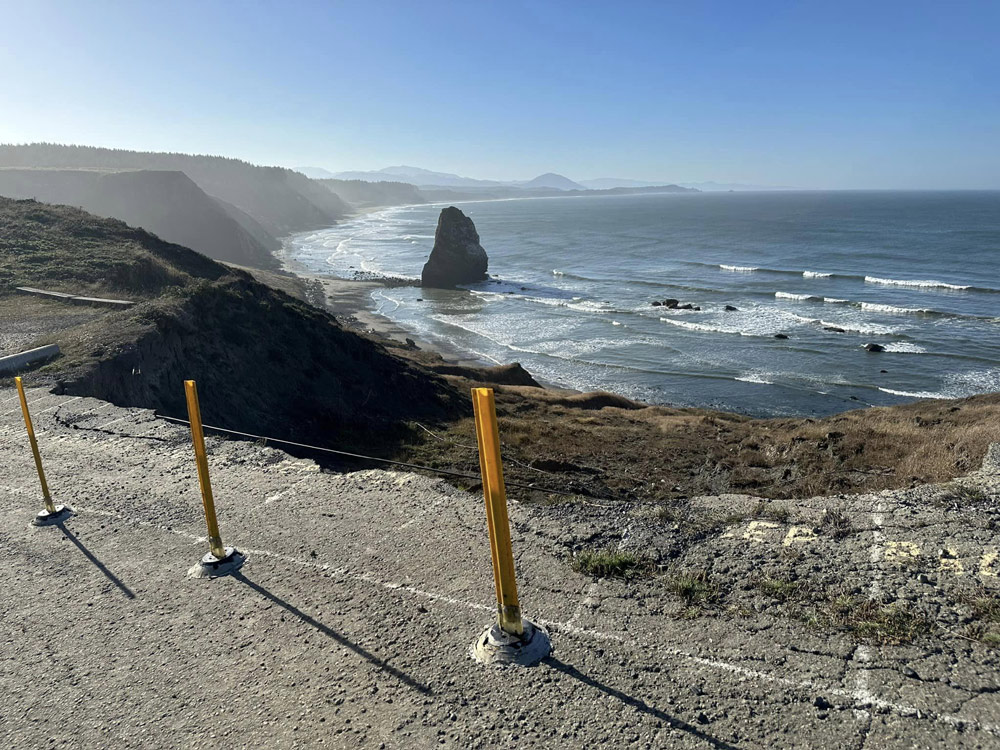
Cape Blanco Lighthouse, Near Port Orford. Historical adventures and misadventures here are aplenty, including dealing with shipwrecks and storms. But these days the beautiful, soaring tower is kind of fighting for its life.
Oregon Coast Hotels in this area - South Coast Hotels - Oregon Coast Vacation Rentals - Where to eat - Maps - Virtual Tours
Besides the lighthouse degrading and needing funds to fix it, the magnificent headland is eroding and taking parts of the road with it. Sizable landslides took away some of the means to get around enormous Cape Blanco, which is known as the secondmost western spot on the west coast. Each winter season takes out more.
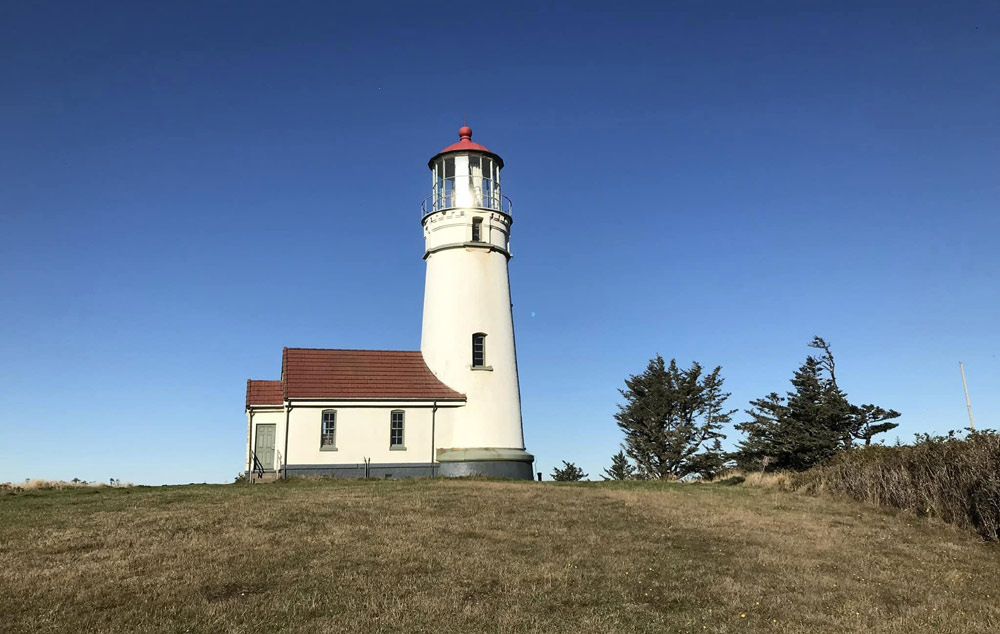
“The cape itself is on a challenging piece of land with erosion and geological fault zones, but so are many lighthouses,” said the Cape Blanco Historical Society's executive director Rebecca Malamud-Evans. See full story on repairs, erosion at Cape Blanco Lighthouse
Funding is badly needed there. You can help by donating to saveourlighthouse.net or spreading the word. The lighthouse may even have to end up in private ownership.
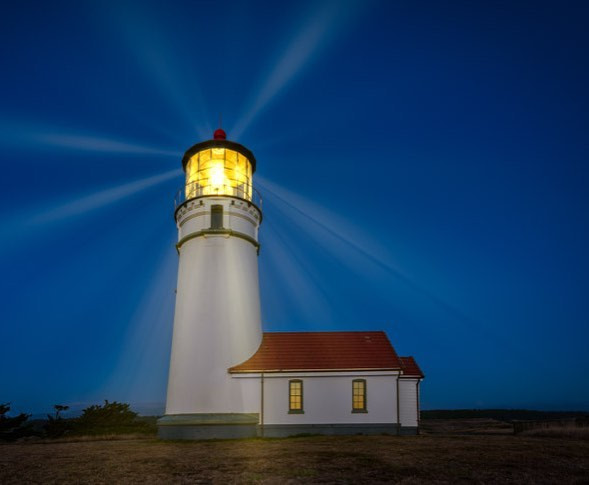
courtesy Manuela Durson - Manuela Durson Fine Arts
Coquille River Lighthouse, Bandon. Going live in February of 1896, Bandon's little sentinel is technically the shortest on the Oregon coast: while it's two feet higher than Cape Meares Lighthouse's 38 feet, it does not sit on a hill.
Indeed, this light has always been close to the action – like right up against it. Storms lashed at this beauty for decades, eventually causing cracks in the foundation.
Interestingly, it was built on what was called Rackleff Rock – a little island of rock near where the jetty would eventually go. However, over time the area around it filled with sand and the island was no more: it and the lighthouse became part of the mainland.
One of the Coquille River Light's adventures happened the day after it was lit – March 1 – a snow storm descended. Right off the bat, lightkeepers had to use the fog horn. Historic Adventures of a Lighthouse on South Oregon Coast: Coquille River Light at Bandon
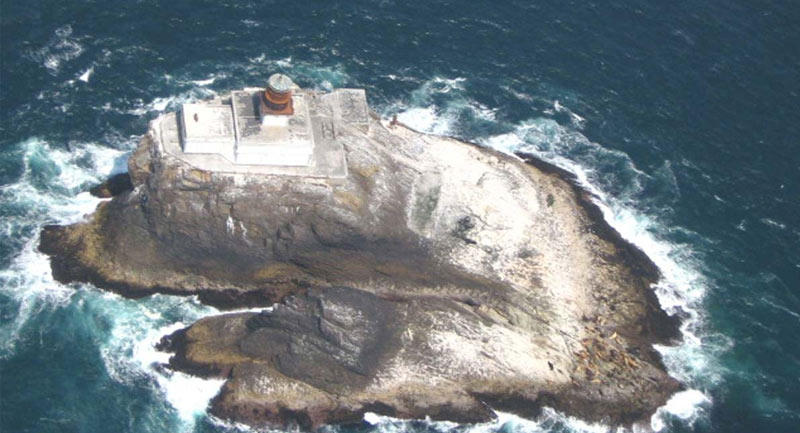
Oregon Coast Beach Connection
Tillamook Rock Lighthouse – Between Cannon Beach and Seaside. Lying offshore about half a mile, it's called Terrible Tilly for a lot of reasons.
Coast Guard lightkeepers were stationed there for months on end, a few at a time, during its run from the 1880s to the 1950s. There are a lot of wild tales from that one. Most dramatic of them, however, is likely the storm that nearly destroyed it on October 21, 1934.
Waves and winds were so strong the lighthouse was periodically under water. Waves shot upwards over 100 feet sometimes when hitting the rock, which broke through the windows and especially the tower, which was some 133 feet above the sea. Sea water, broken glass, debris, rocks and even dead fish and barnacles rained down on them from the throat of the tower. Men clung to the rafters to keep from being drowned – inside the building.
Basalt rock was actually getting split on one side of the little rock island, and some of the panels of the Fresnel lens were in millions of pieces. Early in 1935, the lantern was replaced by an electric light.
There are also standout historical accounts of how the Tillamook Rock Lighthouse was built, how construction crews were even sequestered from seeing news about how dangerous the job was, and the wild tale of the ghost-like encounter at the lighthouse. Practically Paranormal: Creepy Tales from N. Oregon Coast's Tillamook Rock Lighthouse
Cannon Beach Lodging
Nehalem Bay Lodgings
Manzanita Hotels, Lodging
Three Capes Lodging
Pacific City Hotels, Lodging
Lincoln City Lodging
Depoe Bay Lodging
Newport Lodging
Waldport Lodging
Yachats Lodging
Oregon Coast Vacation Rentals
Oregon Coast Lodging Specials
More About Oregon Coast hotels, lodging.....
More About Oregon Coast Restaurants, Dining.....
 Andre' GW Hagestedt is editor, owner and primary photographer / videographer of Oregon Coast Beach Connection, an online publication that sees over 1 million pageviews per month. He is also author of several books about the coast.
Andre' GW Hagestedt is editor, owner and primary photographer / videographer of Oregon Coast Beach Connection, an online publication that sees over 1 million pageviews per month. He is also author of several books about the coast.
LATEST Related Oregon Coast Articles
Oregon State Parks Day on June 7: Free Parking and Events on Coast, InlandHikes, talks, BBQ, disc golf and even astronomy. Sciences, south coast events, Florence events, Astoria events, Seaside events, Cannon Beach events, Manzanita events, Rockaway Beach events, Tillamook events, Garibaldi events, Oceanside events, Pacific City events, Lincoln City events, Depoe Bay events, Newport events, Waldport events, Newport events, Yachats events, Brookings, Coos Bay, Reedsport
Newport's First Kittypalooza Takes Over Central Oregon Coast on June 26
Kittypalooza, a feline-themed event celebrating Adopt-a-Cat Month. Newport events
N. Oregon Coast's 'Cheese War' a Quiet Part of Tillamook-Area History: See th...
History talk in Nehalem on April 26 about Tillamook battles. Manzanita events, Cannon Beach events, Tillamook events
Catching Another Side of Astoria: Ethereal Oregon Coast Scenery at Night
A photo essay: surreal city and maybe some Star Trek
Oregon Wildlife Experts: Leave Animal Babies Alone in Forests, Coast
People with the right intentions can do the worst. Marine sciences
Whale Body Parts Found on Oregon Coast - Two Whales Strand on Washington Coast
One was a rare orca find; both suspected human interaction. Marine sciences
Military Truck Tours Back at Fort Stevens, Go Back in Time on N. Oregon Coast
Hop aboard a five-ton military truck and rove around the grounds. History. Astoria events, Warrenton
45 Years Ago Today: Explosion of Mt. Saint Helens Recorded from Oregon Coast
Hear the recording from Newport; some observations from being there. History
Back to Oregon Coast
Contact Advertise on Oregon Coast Beach Connection
All Content, unless otherwise attributed, copyright © Oregon Coast Beach Connection. Unauthorized use or publication is not permitted





